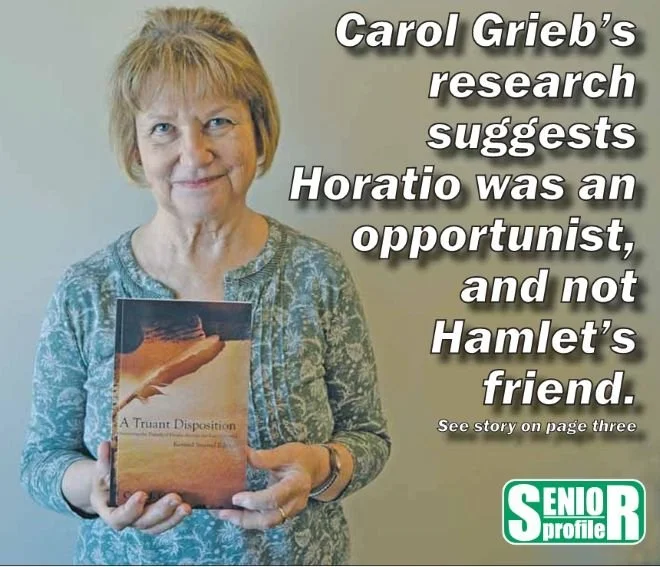A Truant Disposition:
Discovering the Tragedy of Hamlet through the Role of Horatio
REVISED Second Edition
Horatio, in Shakespeare’s most popular play, is his most misunderstood character. After nearly two decades of researching "Hamlet," I wrote “A Truant Disposition” to offer a more consistent and consequential role for Horatio. This arises from the spoken words of the texts closest to Shakespeare’s hand, and grounds the play in its historical context. The late 1660s revival of the play missed the deeper Elizabethan (“Regnum Cecilianum”) tragedy, and put us on a false trajectory for understanding some of the characters. The play intends that Horatio, whom audiences still understand as Hamlet’s “friend,” play Shakespeare’s most complicated, ENDURING, AND PROBABLY UNWILLING villain.
The book uncovers the role of Horatio as a more textured character - not just Hamlet's two-dimensional side-kick who shows up from college and doesn’t leave. Shakespeare drew Horatio as a flawed villain - a counterpart to Hamlet's flawed hero. We’ll question the (now traditional) 1660s interpretation of the play which emerged about sixty years after the play was written. Questioning relies on the texts closest to Shakespeare's hand (Q1, Q2, and First Folio). Questioning grounds the tragedy in the tumultuous decade straddling the turn of the seventeenth century. Imagine staging that more adequately unites the themes in the play and does not change or eliminate lines or characters. What is Horatio's place at Elsinore? Why are the characters of Fortinbras, Reynaldo, and Voltemand necessary to the play? The author emphasizes character development and staging that more adequately imagine directions embedded in the spoken lines. This readable book is equally for those with casual, scholarly, or professional interests in Shakespeare’s Hamlet.
Shakespeare's Hamlet has intrigued scholarly critics, as well as casual playgoers, leading to more debate than any other play. The author comes to the play first as a curious spectator, then introduces us to scholars and directors who express similar curiosity about the play.
Credit to Kenneth Branagh’s HAMLET (1996) for some of the character images.
THE GHOST in “HAMLET”
Top Photo of drawing credit: GiovanniPaolo Marana, “Letters Writ by a Turkish Spy who Lived Five and Forty Years, Undiscover’d, at Paris,” eight volumes, Vol 1: 25th ed.; Vol 2-8: 13th ed., (London: A. Wilde, 1753), image excerpt from Vol 1 frontispiece entitled “Mahmut the Turkish Spy,” by J. Basire Sculp. Courtesy of Special Collections, Kenneth Spencer Research Library, University of Kansas Libraries.
(Top video) Grieb introduces perspectives presented in her book, "A Truant Disposition" in these lecture excerpts. Videographer: Kendra Hardin.
(Second video above) Grieb further explains the roles of the ghost, Fortinbras, and Horatio in these excerpts from the lecture on "Hamlet."
Earl of Essex (Robert Devereux) 1590s, Isaac Oliver, Victoria and Albert Museum
The Execution of Mary Queen of Scots, William N. Gardiner, Metropolitan Museum of Art NY, NY.
Book can also be purchased directly from me. $17 includes free shipping. Contact me at cjg4words at gmail.com.
Photo of drawing credit: GiovanniPaolo Marana, “Letters Writ by a Turkish Spy who Lived Five and Forty Years, Undiscover’d, at Paris,” eight volumes, Vol 1: 25th ed.; Vol 2-8: 13th ed., (London: A. Wilde, 1753), image excerpt from Vol 1 frontispiece entitled “Mahmut the Turkish Spy,” by J. Basire Sculp. Courtesy of Special Collections, Kenneth Spencer Research Library, University of Kansas Libraries.







